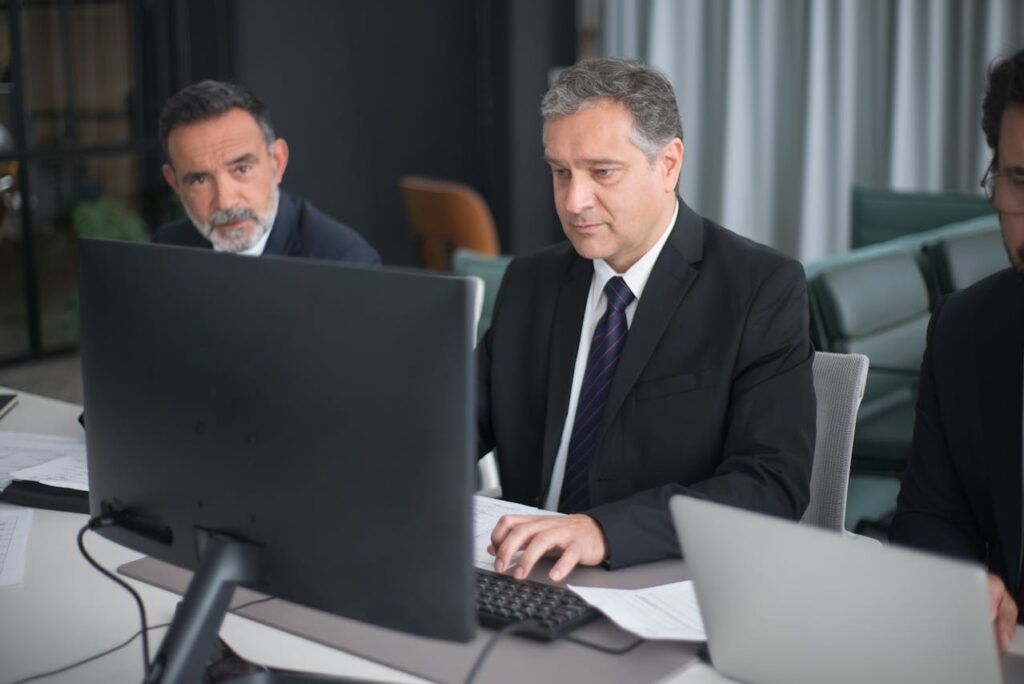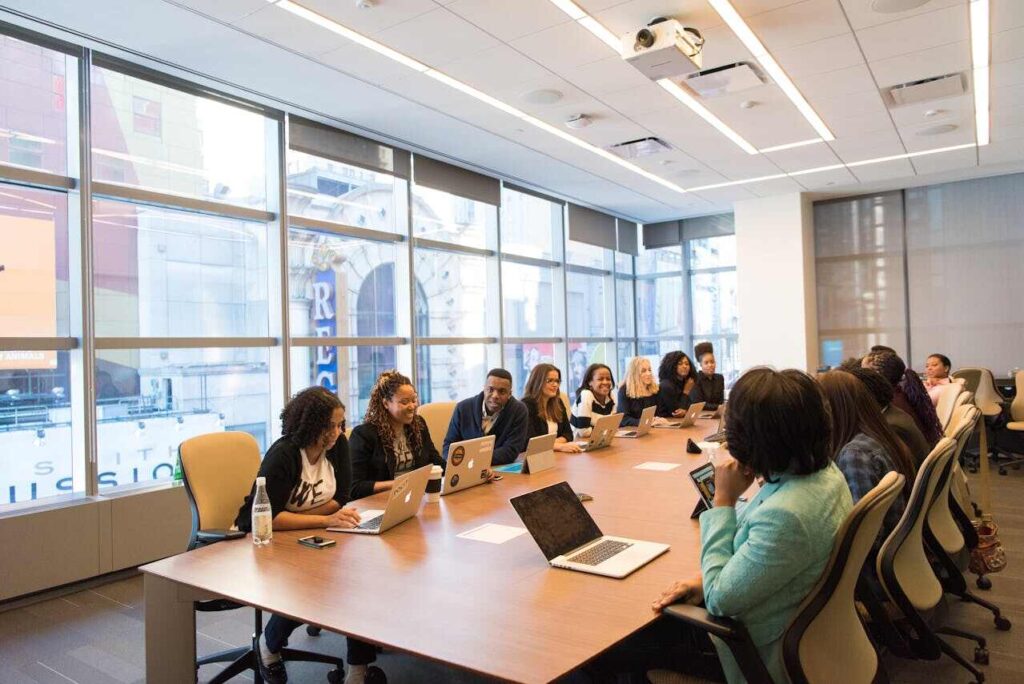Why Investors Prefer Dual-Founders in Hard Tech
Building a hard tech startup is a long road. It’s filled with sharp turns, deep uncertainty, and constant technical evolution. That’s why early-stage investors often pay close attention to something that might seem secondary at first: the number of founders.
But in hard tech—especially in robotics, AI, and engineering-driven companies—this detail is not minor. It can be a signal of survival.
Most investors, especially those who back complex technologies, have a quiet preference. They tend to lean toward founding teams of two. Not three. Not one. Two.
This isn’t about symmetry or headcount. It’s about the type of resilience, trust, and operational strength that’s often required to bring difficult science to market. The kind of balance one person rarely pulls off alone. And the kind of directionless sprawl that can emerge when too many share the wheel.
In this article, we’ll break down why dual-founder setups tend to inspire more confidence in investors focused on hard tech. We’ll explore what dual-founder teams often get right, what solo founders can learn from that model, and how pairing technical excellence with business grit makes a stronger bet in the eyes of VCs who fund deep technology ventures.
Let’s start with what dual-founder teams signal—often before a single slide is shown.
The Investor’s Lens: What Dual Founders Signal
Complementary Strengths, Not Redundant Titles

When investors see two founders, they often look for balance rather than duplication.
One might be the technical brain—an engineer, scientist, or product visionary. The other often brings operational focus—someone who thinks about go-to-market, finance, hiring, and strategy. This division is not rigid, but it gives the team dimension.
This structure suggests that the startup isn’t relying on a single skillset to drive both invention and execution. In hard tech, where both are deeply complex, that matters.
Investors worry when the CTO is handling pitch decks. They also worry when the CEO doesn’t understand the tech deeply enough to speak to feasibility. A dual-founder team, when structured well, reduces this concern.
It shows the startup has enough awareness to divide and own responsibility areas from day one.
Built-In Accountability
Two founders who are equally invested in the mission can hold each other to a higher standard than any external stakeholder ever could.
This dynamic creates internal checks that are often invisible in solo-led teams.
Investors see this as a sign that key decisions—around technical pivots, hiring choices, and capital deployment—are less likely to be made in isolation. It gives them confidence that the startup will self-correct more effectively.
It’s not about friction. It’s about tension that sharpens judgment. Teams that are too agreeable miss blind spots. Dual founders with mutual respect can challenge each other before the outside world does.
Sign of Founder-Market Fit
In hard tech, ideas are easy to fall in love with. But customers, product design, and value delivery often come much later.
Dual-founder setups, especially when one is externally focused, allow early-stage companies to stay grounded in what markets actually want. While one founder iterates on R&D, the other can be interfacing with users, building commercial feedback loops early.
This is incredibly important in spaces like robotics or AI, where technical feasibility often runs ahead of commercial readiness.
Investors are far more likely to fund a lab-born idea if they see evidence that one founder is constantly testing it outside the lab.
Splitting the Burden: Managing Complexity and Pressure
Why Hard Tech Is Too Much for One Founder

Building in deep tech is fundamentally different from launching a typical software startup.
You’re not just managing code or pushing feature releases. You’re juggling long research cycles, difficult regulatory environments, expensive prototyping, and highly specialized talent.
For a single founder, this becomes an exhausting juggling act. Every decision, from IP protection to industrial design and customer engagement, rests on one person’s shoulders.
Even if that individual is capable, the cognitive overload can slow down critical judgment. Deadlines stretch. Priorities clash. Mental and emotional bandwidth becomes the biggest bottleneck.
Investors know this. They’ve seen highly technical solo founders burn out before even making it to market. When they meet a two-founder team, they see a signal that the startup has a built-in mechanism to stay mentally resilient in the face of complexity.
It doesn’t mean things will be easy. It simply means there’s room to breathe—and think—when the stakes are high.
Specialization Builds Momentum
With two founders, each can spend time where they’re most effective.
The technical founder can focus on experiments, partnerships with universities, lab refinement, or supply chain vetting—without being dragged into every fundraising call or operational hiccup.
At the same time, the business founder can stay on top of investor conversations, customer discovery, team hiring, and compliance—without slowing down the product.
This focused attention helps the startup maintain speed, which is vital in sectors where long development cycles often dull investor excitement. It’s hard to be compelling when your startup isn’t moving.
A dual team builds visible progress because each founder stays deep in their zone, solving problems without spreading themselves too thin.
Reducing Execution Risk from Day One
Many investors assess risk in two categories: product risk and execution risk.
Product risk is high in deep tech by default. Your startup is working on something novel, hard to replicate, and unproven in a commercial setting. That’s expected.
But execution risk is different. It’s about whether your team can build what they promise—and whether they can bring it to market with discipline and learning speed.
Dual founders reduce this execution risk by creating a structure that can handle real-world pressure. There’s always someone steering the ship even if the other is heads-down for a while.
This doesn’t guarantee success, but it gives investors greater confidence that mistakes won’t be fatal and decisions won’t be delayed due to one overwhelmed mind.
Strategic Signaling: What Dual Founders Convey to Investors
A Sign of Team-Building Skill Early On
When investors evaluate a founding team, they aren’t just looking at the resumes or the idea. They’re looking at whether this team can attract and retain talent over time. A startup, especially in hard tech, will need to grow beyond its core quickly.
Two founders working together from the beginning show that they’ve already started practicing this critical skill. Forming a strong partnership is the first proof that a founder doesn’t want to go it alone—and that they understand their limits.
This mindset makes it far easier to believe that they’ll be able to hire well later. If you can convince one other highly capable person to join you and build something difficult with no certainty of return, you’ve already done something that many fail to do.
That signal travels faster than most pitch decks. It tells investors that this is someone who can lead others and bring the right people into the fold at the right time.
Complementarity Is Not Just Division of Labor
The best dual-founder teams don’t just divide tasks. They bring out the best in each other’s thinking.
In deep tech, the feedback loops are long. The road is often lonely. And decisions made today might only yield results a year from now. That kind of timeline creates anxiety and second-guessing.
When you have a second founder who deeply understands the mission, and whose perspective complements yours, it creates an environment where doubts can be tested in real time.
It becomes a constant exchange of questions, not a silent struggle with doubt. That collaboration isn’t about comfort—it’s about sharpening insight, stress-testing conviction, and avoiding tunnel vision.
To investors, that looks like a team with checks and balances built into its core. One that is less likely to ignore red flags, fall for hype, or chase shiny distractions.
Confidence in Continuity
Many early-stage startups falter because of founder departure.
Stress builds up. Life changes. Technical challenges pile on. And eventually, one founder burns out or walks away.
When there’s only one founder, this is catastrophic. The startup often ends there. But when there are two founders, investors feel some protection against this kind of existential risk.
Even if one steps back temporarily or needs support, the other can carry the mission forward. Continuity matters a lot in hard tech because it takes time to build trust with partners, regulators, and funders. Stability is part of the long game.
This is especially true for ventures built around a new standard or a new scientific process. Those need years—not quarters—to prove themselves. And investors want to know someone will still be around, pushing the idea forward.
Execution in Hard Tech: Where Dual Founders Excel
Technical and Operational Workloads Rarely Move in Sync

In a typical hard tech startup, product development moves slowly and requires deep technical focus. But the business side doesn’t wait.
You still need to raise funding, talk to users, stay on top of legal requirements, and sometimes even build partnerships long before the product is ready. These two areas—tech and business—have different timelines and pressures.
That’s where having two founders becomes a clear advantage.
One founder can stay focused on building the core tech. They’re not constantly interrupted by calls, pitches, or unexpected fires. The other can deal with market research, investors, and operational puzzles that emerge week by week.
This separation protects momentum. It keeps the technology moving forward, even as the business navigates external uncertainty.
For investors, this split shows maturity. It signals a founding team that knows what needs focus and when, instead of letting both sides pull in different directions and stall each other out.
More Capacity for Investor Engagement
When it’s time to fundraise, being a solo founder can stretch you thin. You’re expected to prepare pitch decks, talk to multiple investors, refine the financial model, and keep the day-to-day running.
With two founders, you can maintain a healthy rhythm without slowing the team down.
Often, one founder can carry the narrative and investor conversations, while the other ensures the rest of the company continues to hit its technical goals. This dynamic gives investors confidence that the company isn’t pausing everything to chase capital.
It also lets the storytelling evolve faster. When one founder handles the front line of investor feedback, they can bring fresh insights back to the team, recalibrate positioning, and prepare better for the next round.
All of this shortens the learning loop and sharpens the pitch. It’s an underrated reason why dual-founder teams often get more investor traction faster.
Easier Proof Points for Execution
In a hard tech company, showing traction isn’t always about users or revenue right away. Sometimes it’s about demonstrating milestones in research, validation with potential customers, or finishing technical builds on time.
When there are two founders, it becomes easier to hit and track these goals.
Each founder can own a set of deliverables and drive them forward without relying entirely on external hires. In the earliest stages, this matters a lot. Investors don’t expect a full team—but they do want to see that the current team can execute without dropping critical balls.
It also gives them something to benchmark. If a two-founder team consistently meets technical and business milestones, even if they’re small, it proves something more valuable than a lofty vision. It proves they can deliver.
Investor Confidence: Built on Complementary Strength
Complementary Strength Is Not About Splitting Skills Down the Middle
When investors say they like dual-founder teams, they don’t just mean having “one tech person and one business person.” That’s too simplistic.
What truly gives them confidence is seeing two people who complement each other not just in role, but in mindset, decision-making, and execution style. Deep tech ventures often enter long, uncertain product cycles before there’s any traction. In that phase, the founders become the main anchor for belief.
If both founders bring not only different skills, but also different modes of thinking—one more experimental and iterative, the other more structured and risk-aware—it shows that the startup isn’t leaning too hard in any one direction. The team can be imaginative without being reckless, and practical without being slow.
That balanced dynamic becomes a signal that the company can survive the ambiguity of early-stage hard tech development.
Investors Feel the Burden Isn’t on One Person Alone
Solo founders in deep tech can often feel like they’re carrying a mountain on their own. They may know their science deeply and believe in the product’s future, but over time, fatigue sets in.
Early-stage deep tech often hits setbacks—dead ends in R&D, slow adoption from early customers, or long procurement cycles. These are heavy to endure when the vision is big but progress feels small.
With two founders, investors see something different. They see a pair of minds supporting each other, exchanging feedback, and checking blind spots. This lowers the emotional risk of burnout and increases the odds of consistent strategic decisions over time.
Even the best investors can’t be in the trenches with the team every day. So they want to know that the team can lean on itself and stay sharp, even when conditions get tough.
A dual-founder structure becomes a kind of internal redundancy—if one gets pulled away by personal matters, or even just burns out temporarily, the company doesn’t grind to a halt.
Resilience Is Easier to Read When It’s Shared
One thing investors look for early on is how the team responds when something goes wrong. Do they adapt fast? Do they get stuck debating direction? Do they retreat?
With two founders, those moments tend to bring out more productive recovery. There’s usually someone to offer perspective when the other is stuck in frustration or tunnel vision.
Investors notice this dynamic very quickly. It often shows up in how the team responds to hard questions during a pitch. Does one founder get defensive while the other re-frames the idea? Do they nod in sync but offer different points of view?
These cues might seem subtle, but they create a strong impression. And over time, they shape how much trust an investor builds with the team.
If both founders demonstrate they can hold pressure, learn quickly from feedback, and recalibrate with clarity, it tells investors something important. It tells them the startup isn’t fragile.
Shared Vision and Differentiated Roles
Investors Want to See Harmony Without Overlap
One of the key strengths that dual-founder teams bring to hard tech startups is the ability to operate in parallel while staying tightly aligned. This is more than just “divide and conquer.” What investors really want to see is a team that shares the same long-term vision, but can approach it from different vantage points without stepping on each other’s toes.
This becomes especially important in deep tech, where the work is intellectually dense and timelines are stretched. If one founder is focused on optimizing a research path while the other is tackling pilot partner discussions or IP strategy, both efforts move forward without friction. They don’t just reduce workload—they reduce cognitive clutter for one another.
That sense of fluidity within clearly differentiated roles gives investors confidence that the company can build at a high pace without constant internal friction or bottlenecks.
Investors Read Alignment from the Smallest Interactions
In pitch meetings, diligence calls, and even casual conversation, investors are quietly observing how founders communicate. If one founder is asked a question and instinctively brings the other into the answer—not to deflect, but to enrich—that signals mutual trust.
This matters a lot in high-risk ventures where coordination is everything. Investors have learned, often the hard way, that poor internal alignment can kill even the most promising technology.
If both founders finish each other’s thoughts without talking over each other, if they can disagree constructively, and if they each shine in their domain—these are subtle but powerful green flags.
This kind of dynamic is nearly impossible to fake, and that’s exactly why it holds weight in the eyes of early-stage investors.
The Final Signal: A Team Built for the Long Haul
Deep Tech Isn’t a Sprint—And Dual Founders Reflect That

In SaaS or marketplaces, a startup can sometimes grow fast, pivot quickly, and reach revenue traction within a year. But in hard tech, things are different. Development can take years. Go-to-market strategies can feel like navigating a maze. Regulatory hurdles or scientific unknowns can slow things down.
So investors don’t just evaluate the idea or even the science—they assess endurance. And in their experience, endurance is a team trait, not an individual one.
A dual-founder team increases the odds that the startup can weather the slower early phases. It increases the chance that one founder can handle late-stage fundraising while the other keeps tech development on track. It increases flexibility, without compromising speed.
Most of all, it shows that the company isn’t just betting on a solo genius. It’s building on a partnership. And that’s what gives deep tech investors peace of mind.
Closing Thoughts: It’s About More Than Two People
Ultimately, when investors say they prefer dual-founder teams, they’re not just looking for a co-founder for the sake of form. They’re looking for a founding dynamic. A shared pace. A mutual respect. A balance between vision and delivery.
In hard tech especially, the bar is high. The work is long. The markets are complicated. And the stakes are real. Having two capable founders who trust each other and move in sync doesn’t just make the work easier—it makes success more likely.
At Tran.vc, we back early-stage robotics, AI, and complex tech teams where both vision and execution run deep. We look not just for the strength of your science, but the strength of your partnership. Because it’s often that foundation—not just the technology—that attracts belief, patience, and capital in the long run.
If you’re a deep tech duo building something ambitious, we’d love to hear from you.
